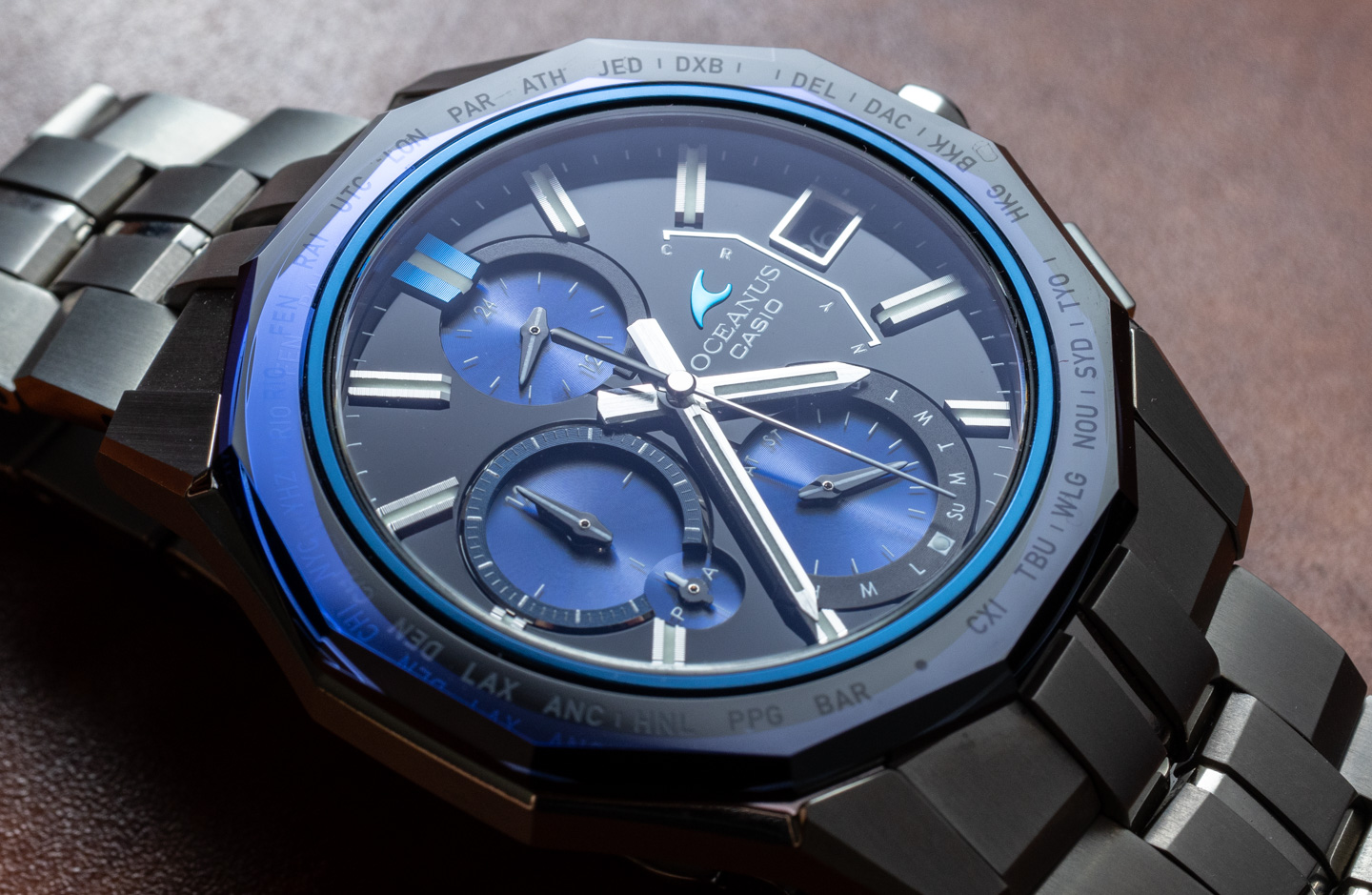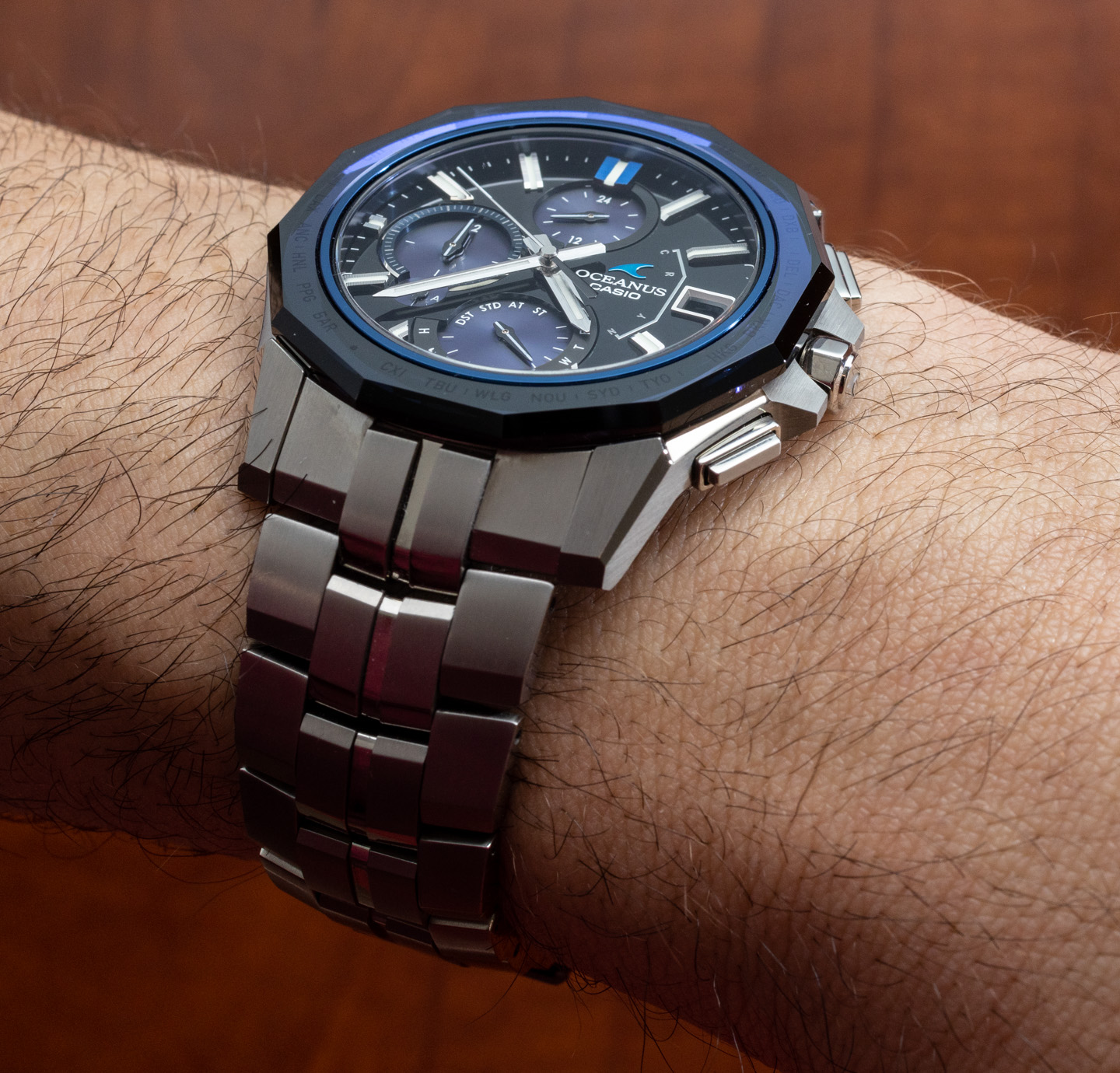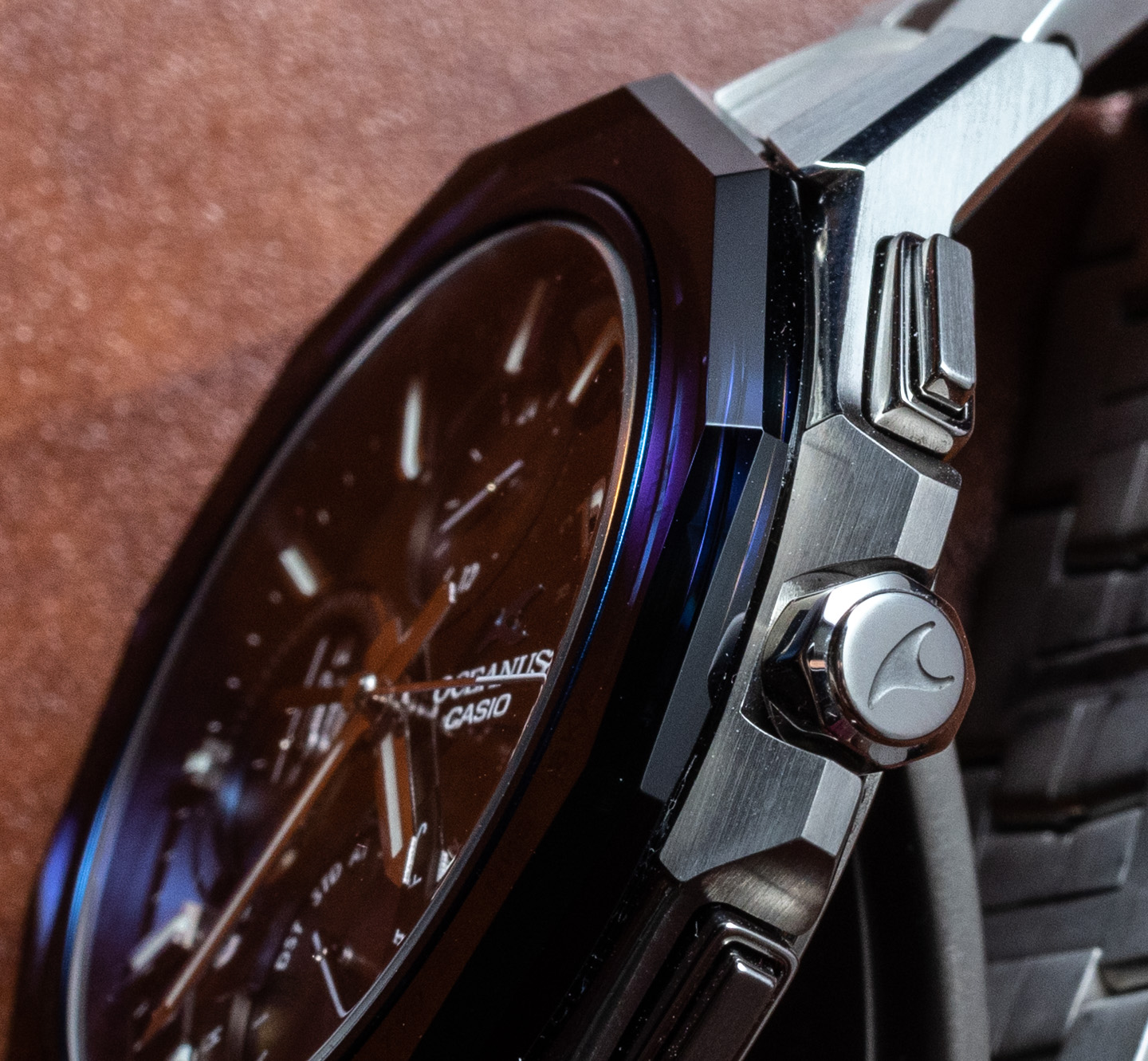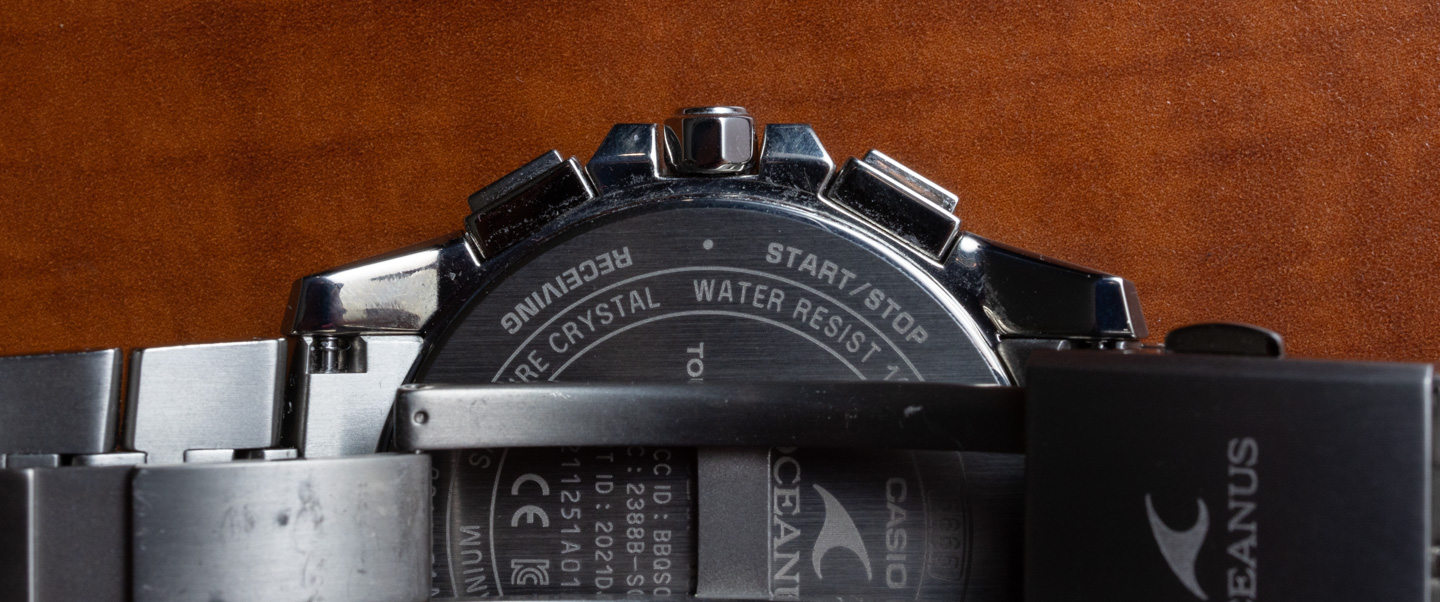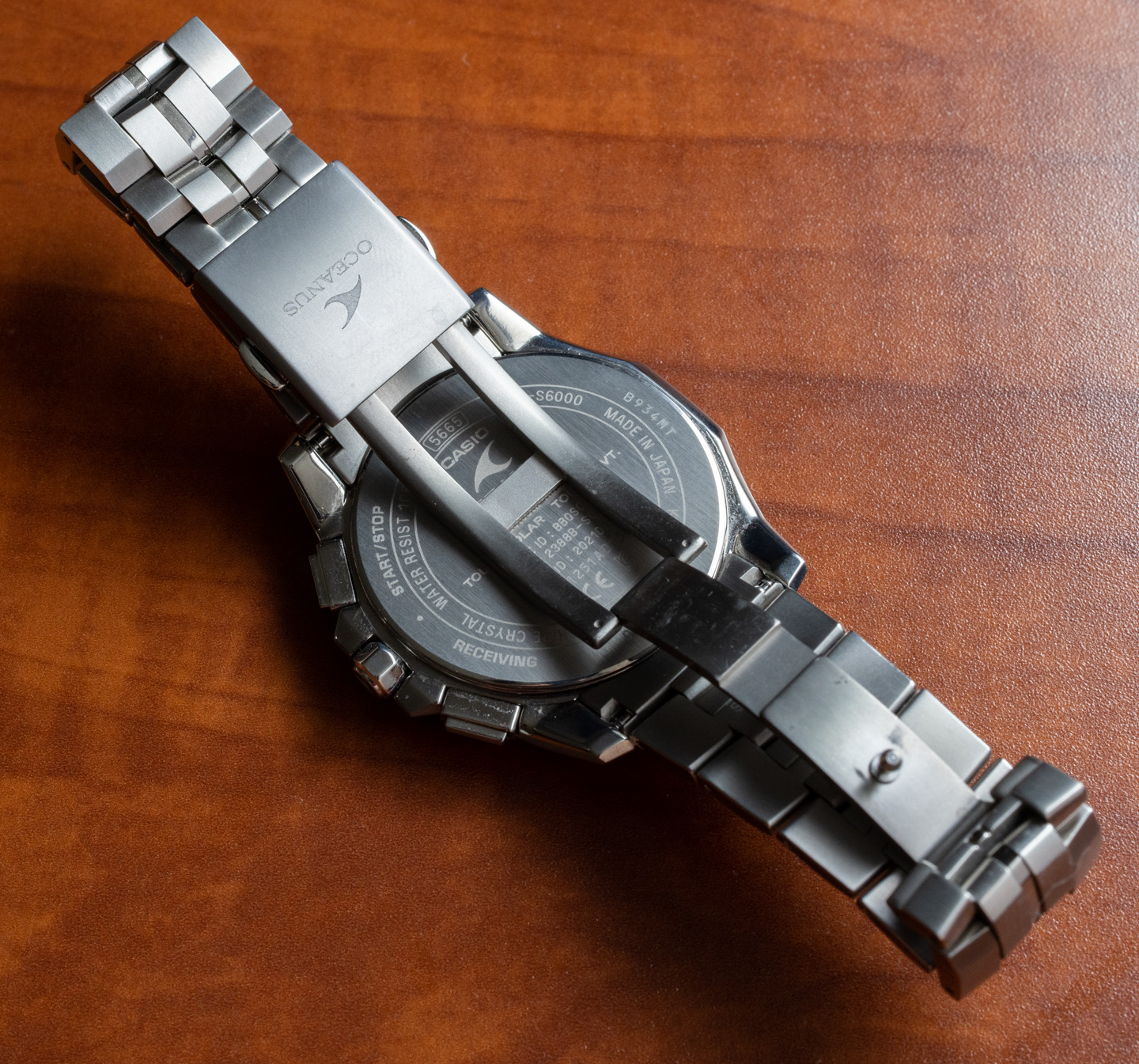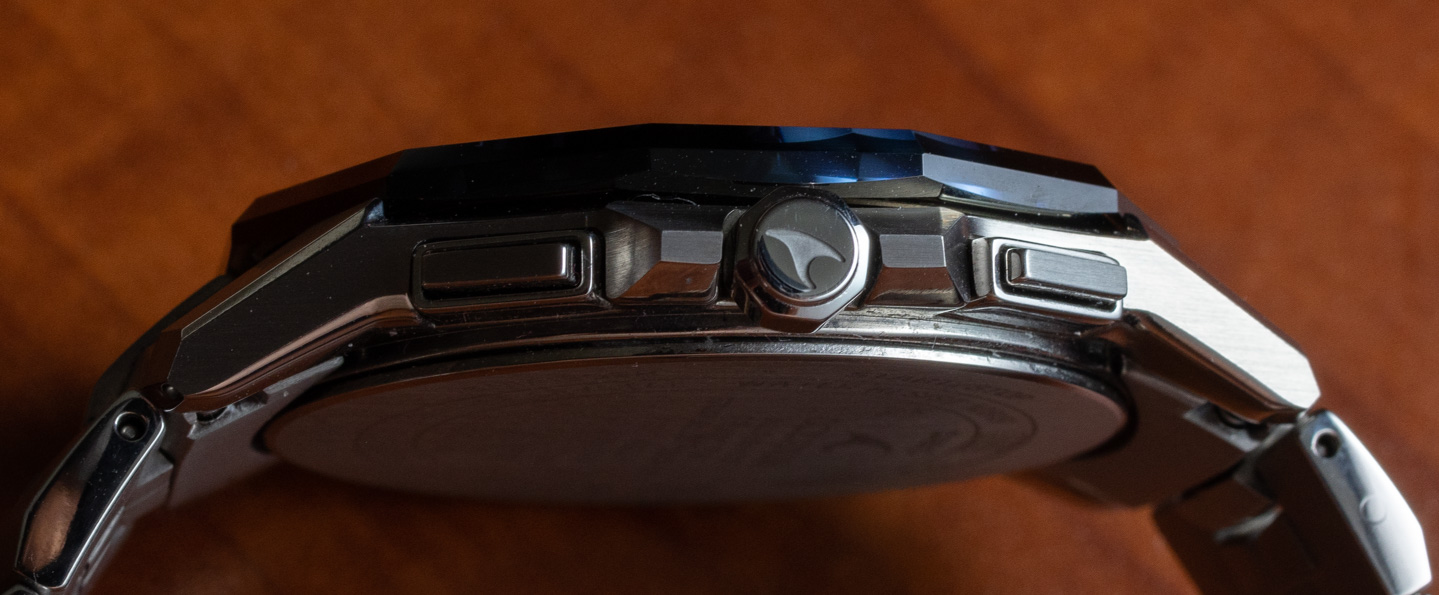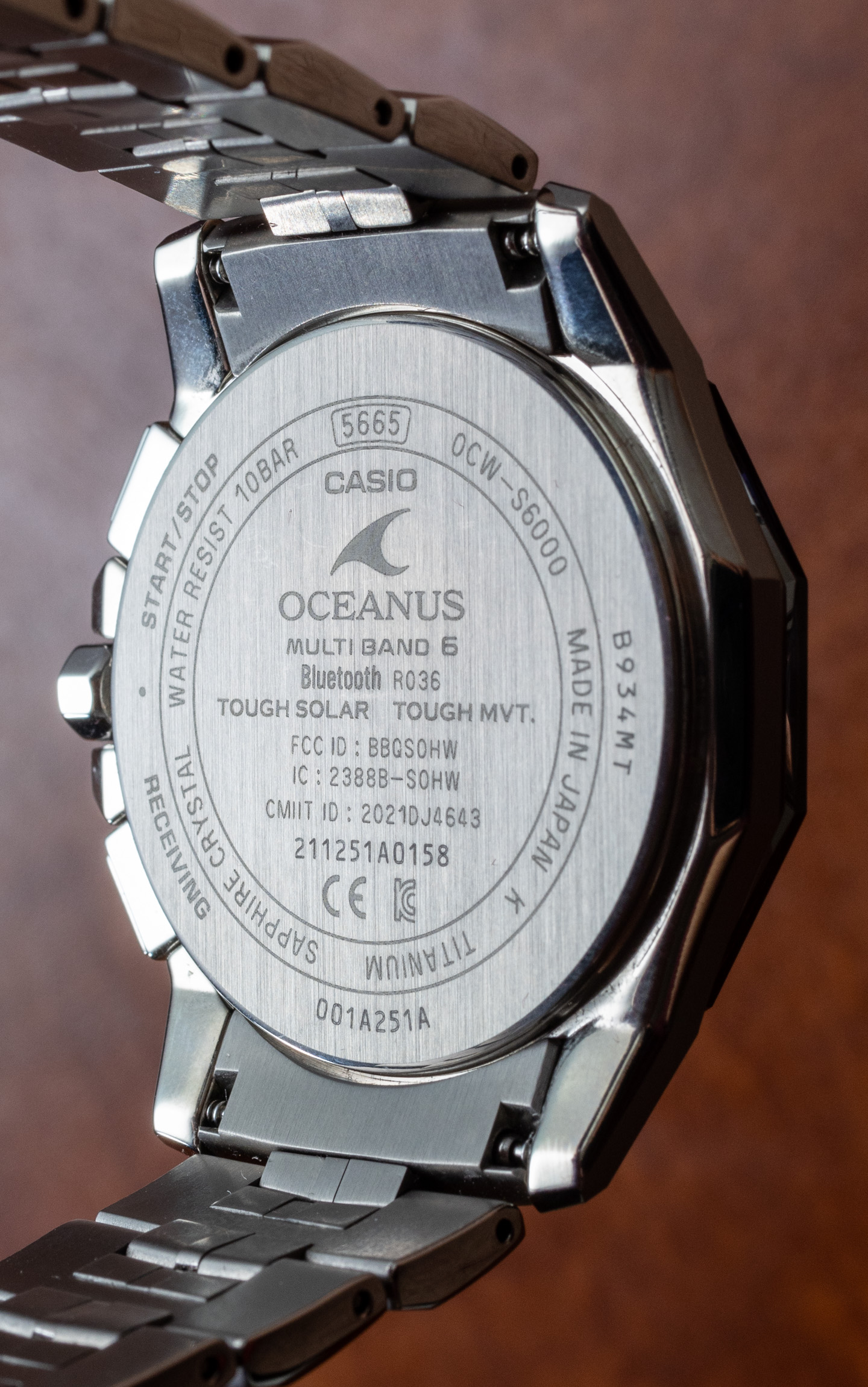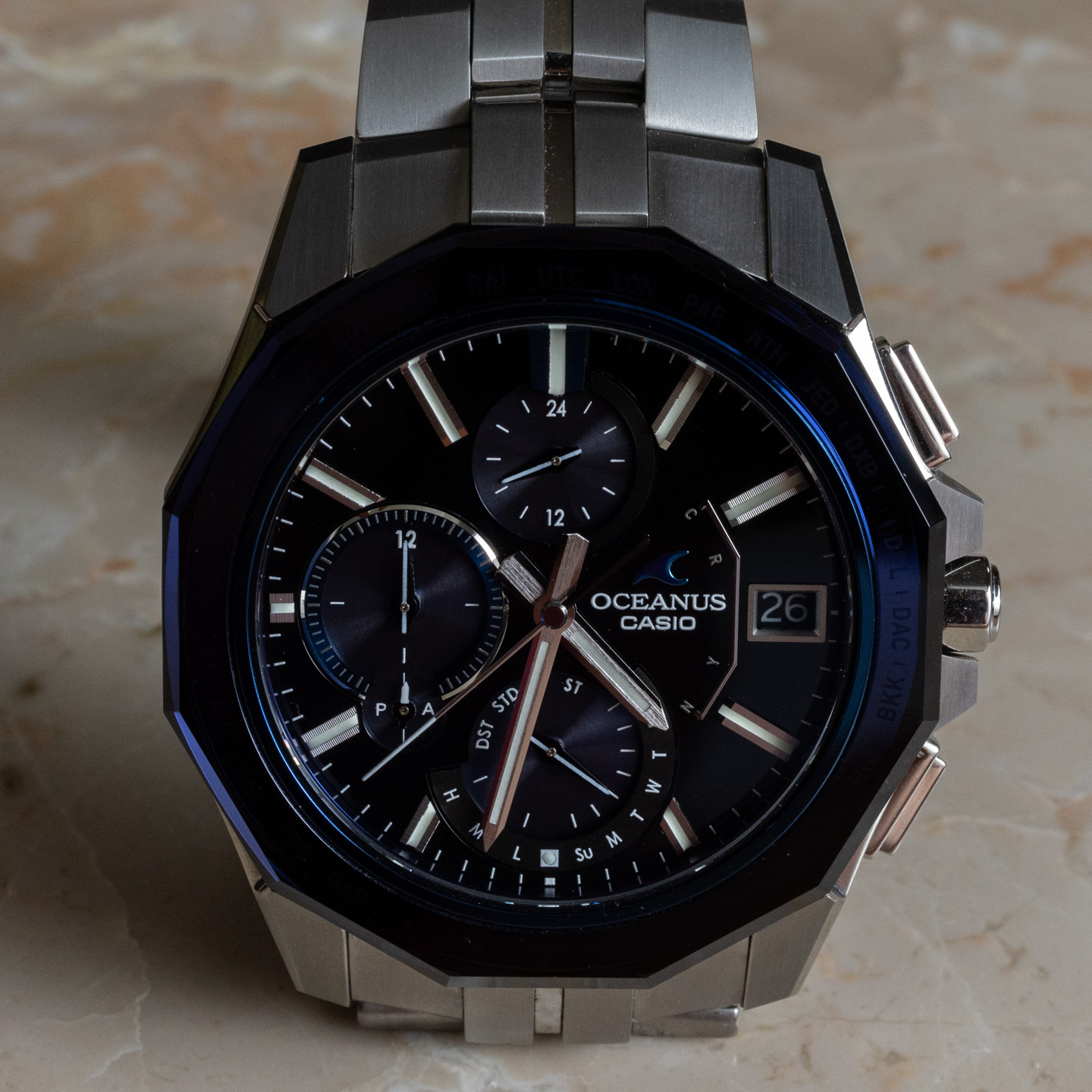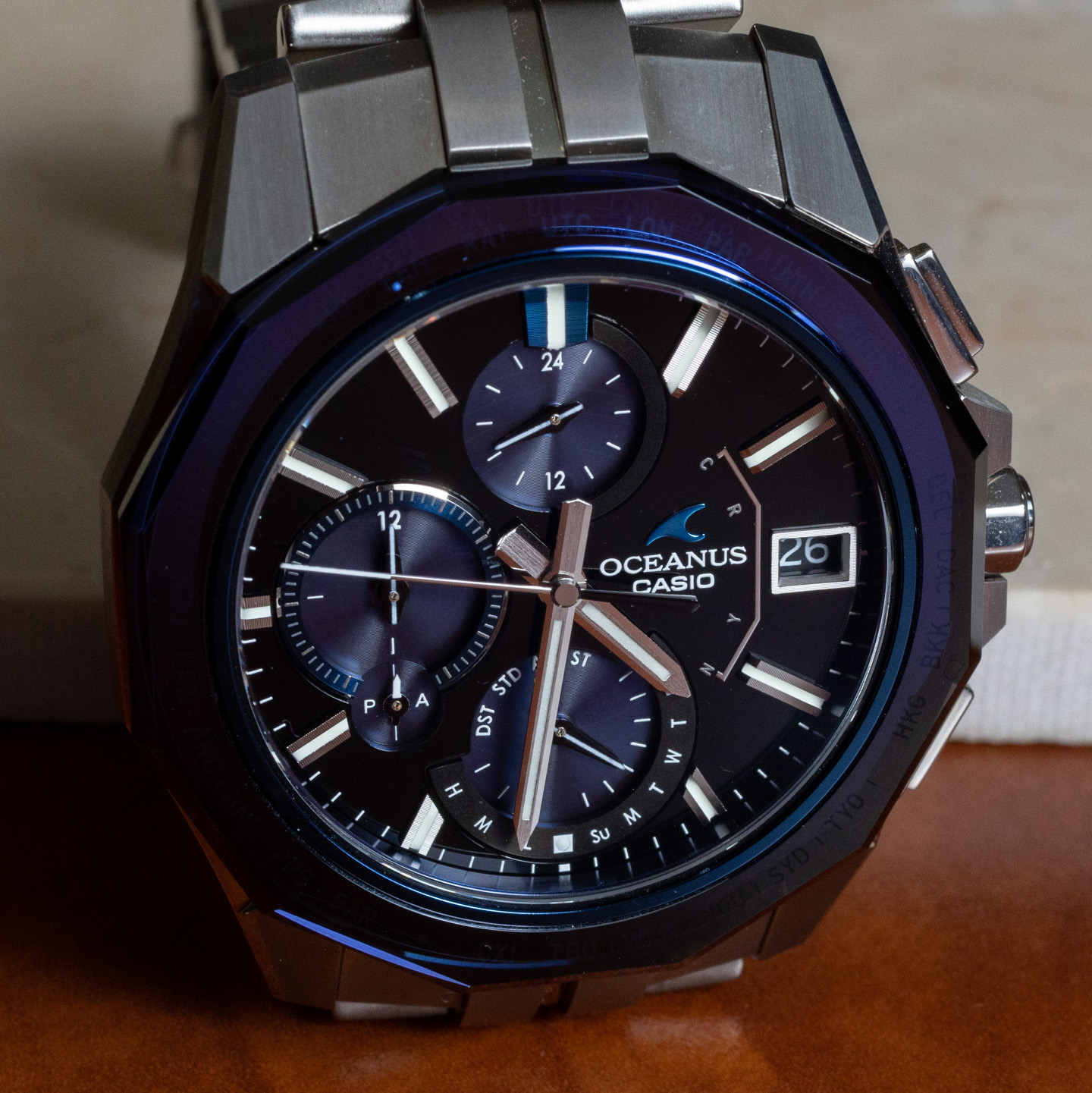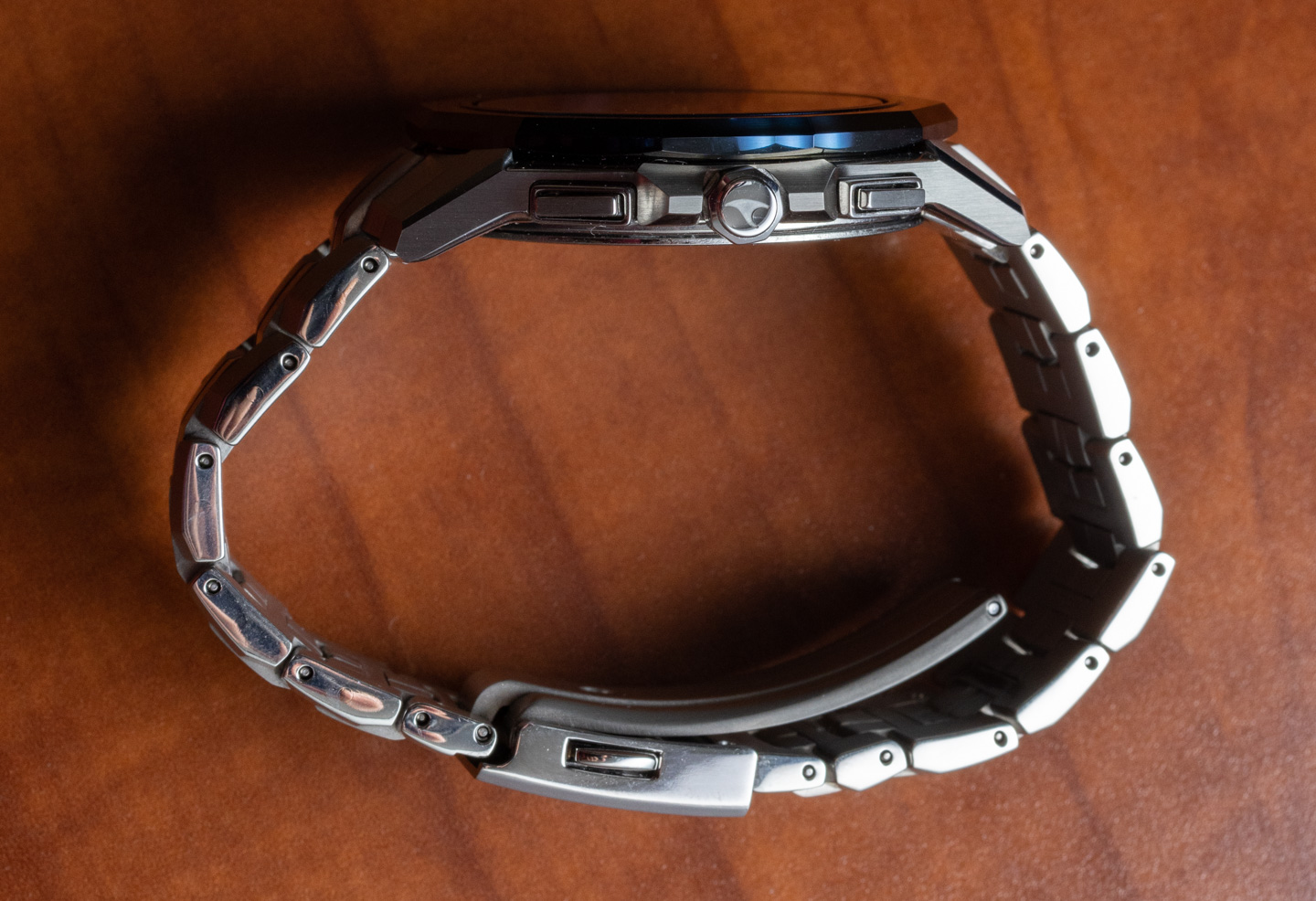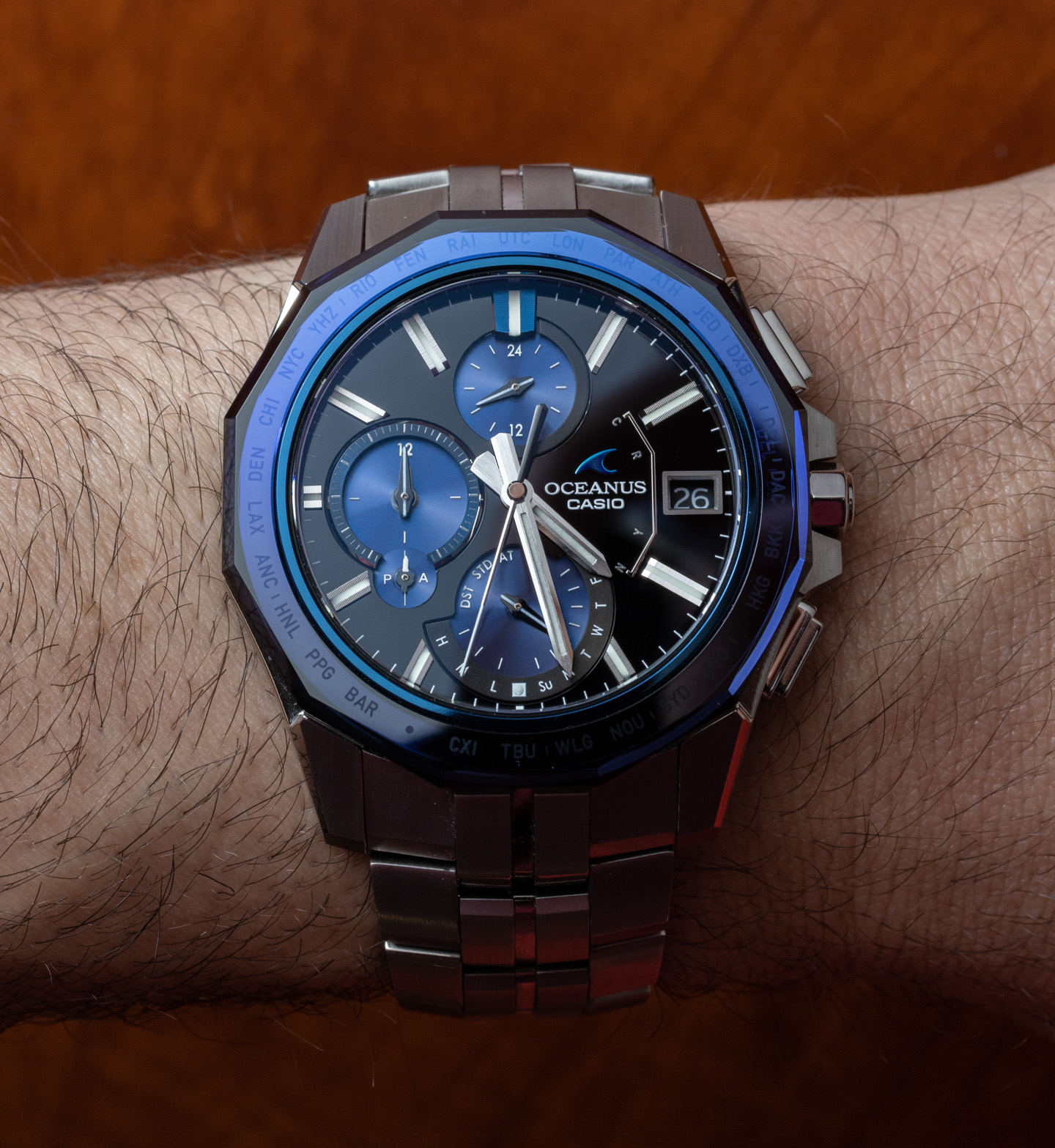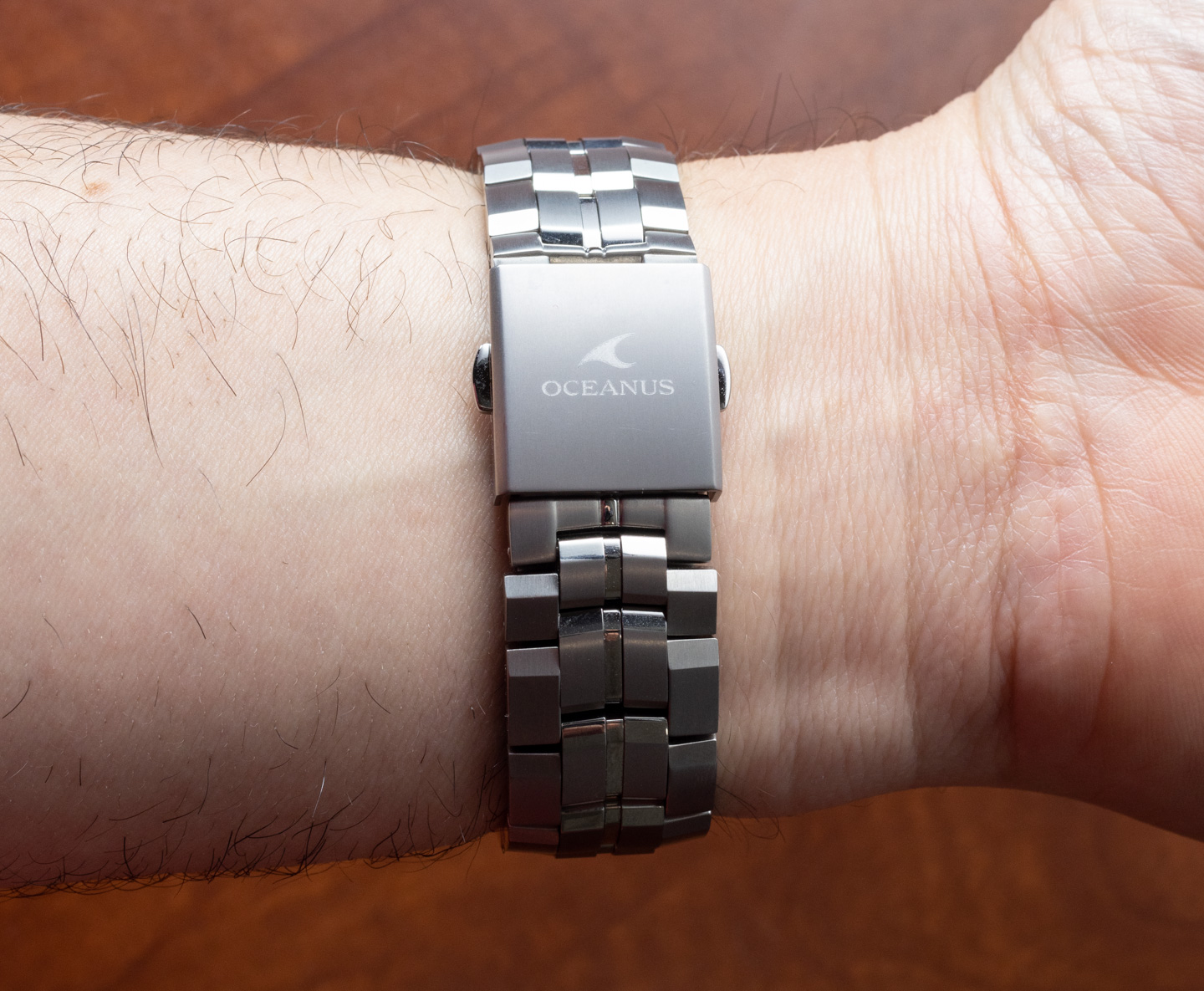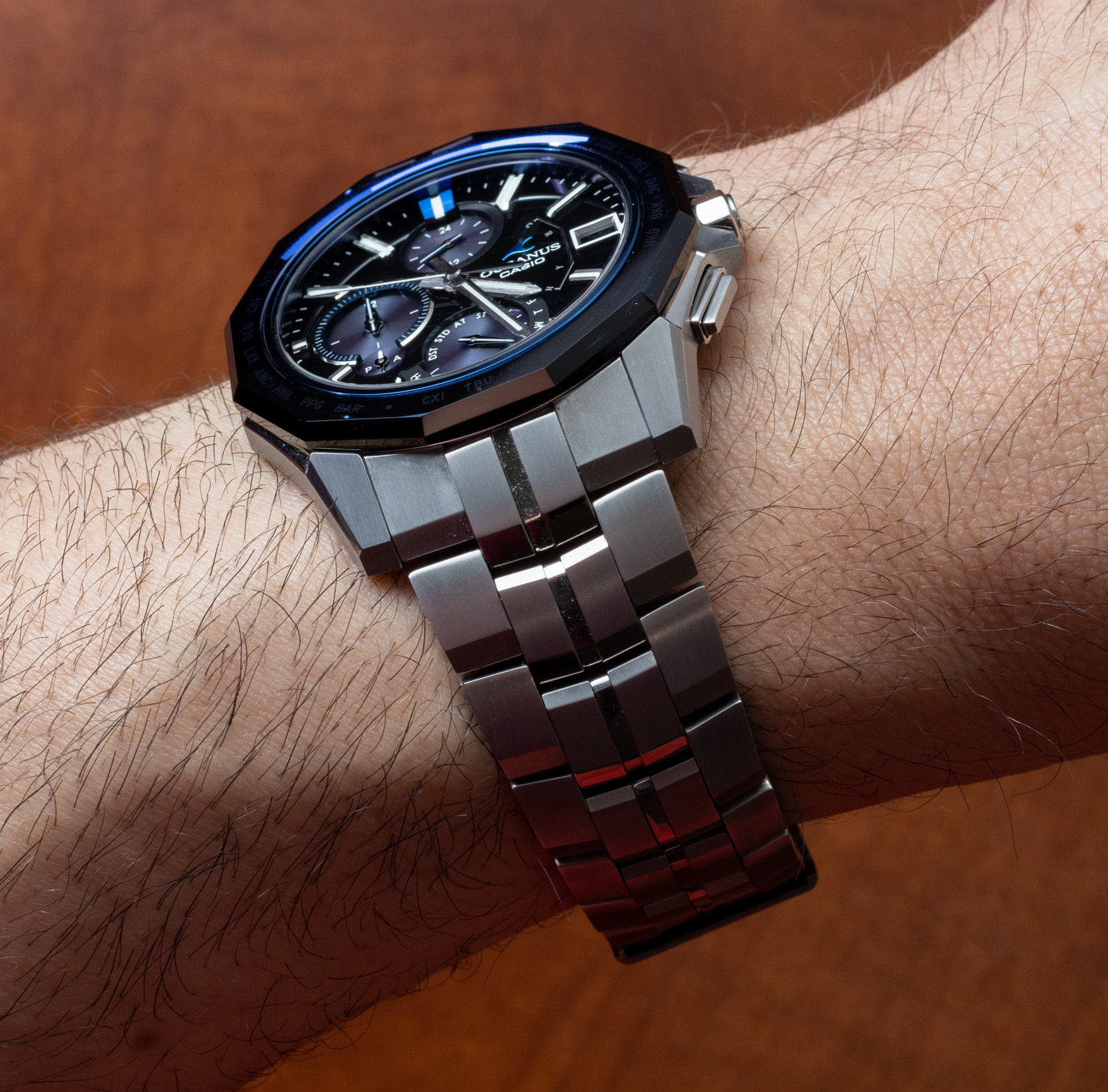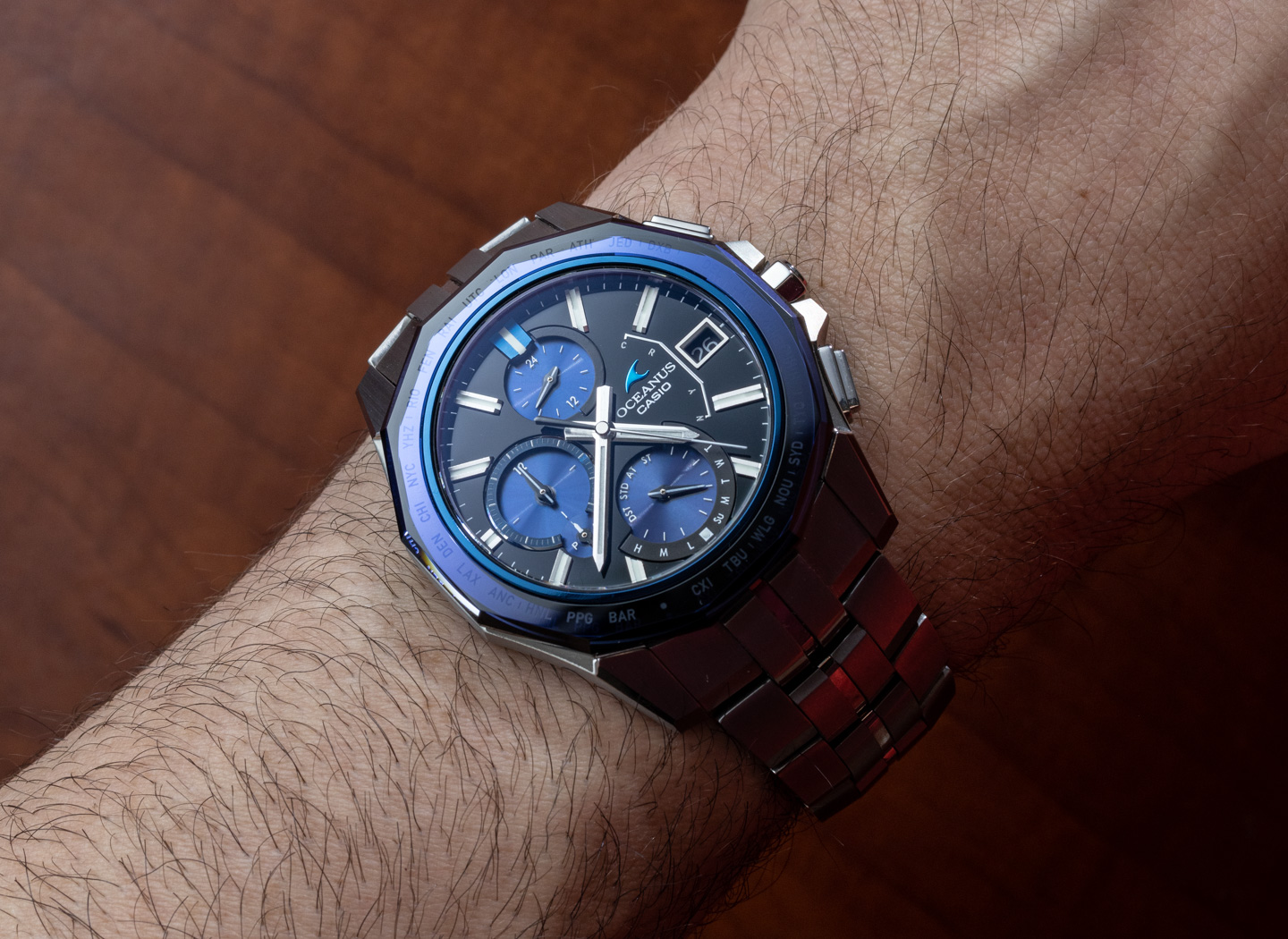
Japanese Casio recently updated its fancy Oceanus Manta watch collection with a brand-new model known as the Oceanus Manta OCWS6000. Today, I review the reference OCWS6000-1A, which has a black and blue dial and stunning sapphire crystal bezel with a special blue color treatment applied to it. The Casio Oceanus collection represents the brand’s most high-end watches outside of the popular G-Shock family. For years, these products have been mostly JDM (Japanese domestic market), but more recently, Casio has begun to sell more and more of its higher-end products outside of Japan and a few select markets. You can now get Oceanus Manta watches in the United States either direct from Casio or via one of the brand’s authorized watch dealers. Over the last few years, Casio has been doing so well with its higher-end store accounts (which typically sell more expensive Swiss watches) that retailers have asked for additional products to sell. This was probably a major impetus for Casio to market this once niche family of products to timepiece enthusiasts around the world.
The Oceanus Manta OCWS6000 builds on the previous-generation Oceanus Manta OCWS5000 which aBlogtoWatch went hands-on with here. When you look at these two model families, it might appear at first that the OCWS6000 is just a new bezel and dial design, but in fact, these watches have entirely new cases. What the two Oceanus Manta generation products share is the Casio-made solar-powered quartz movement, as well as the lightweight titanium construction with similar bracelets.
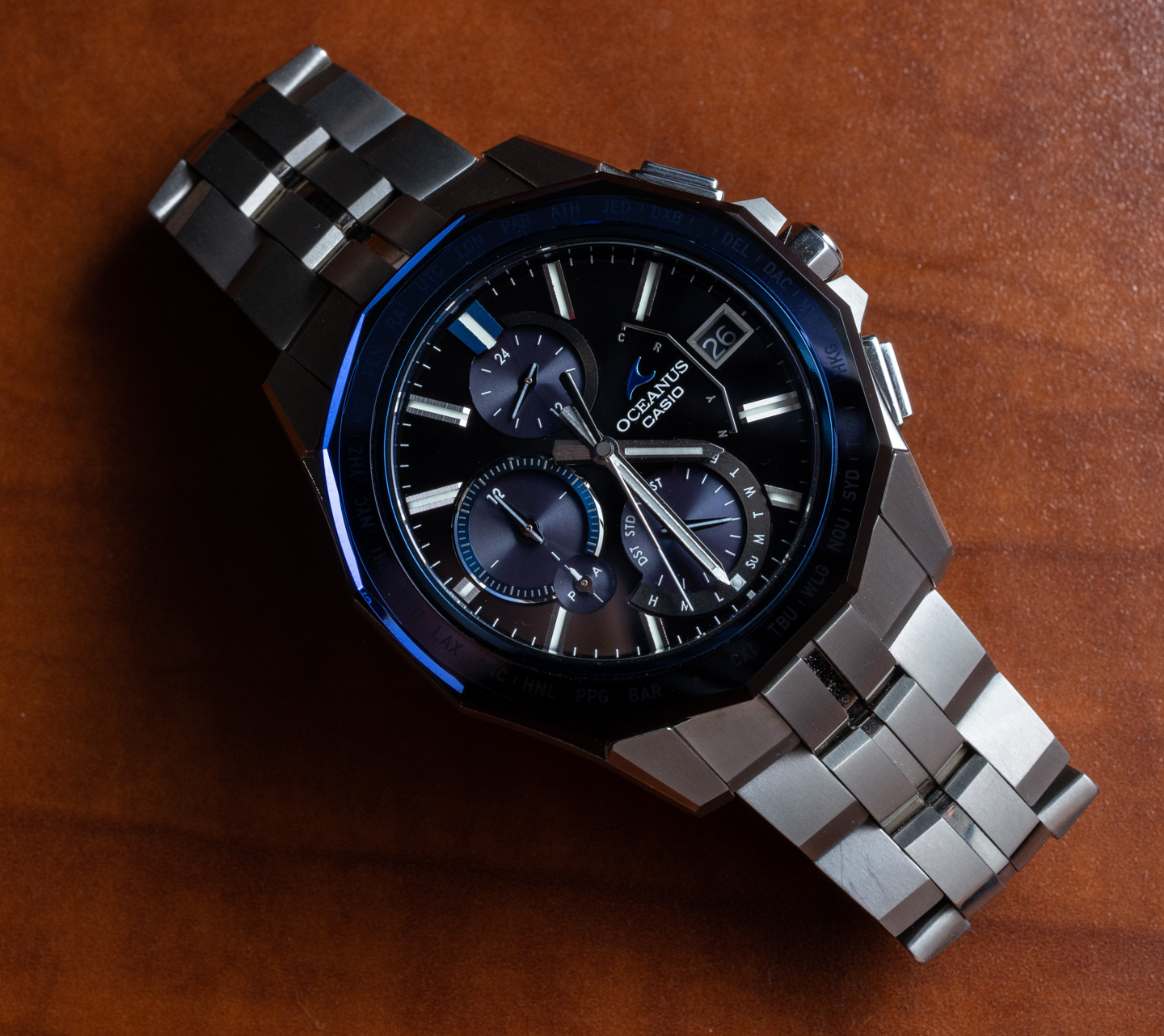
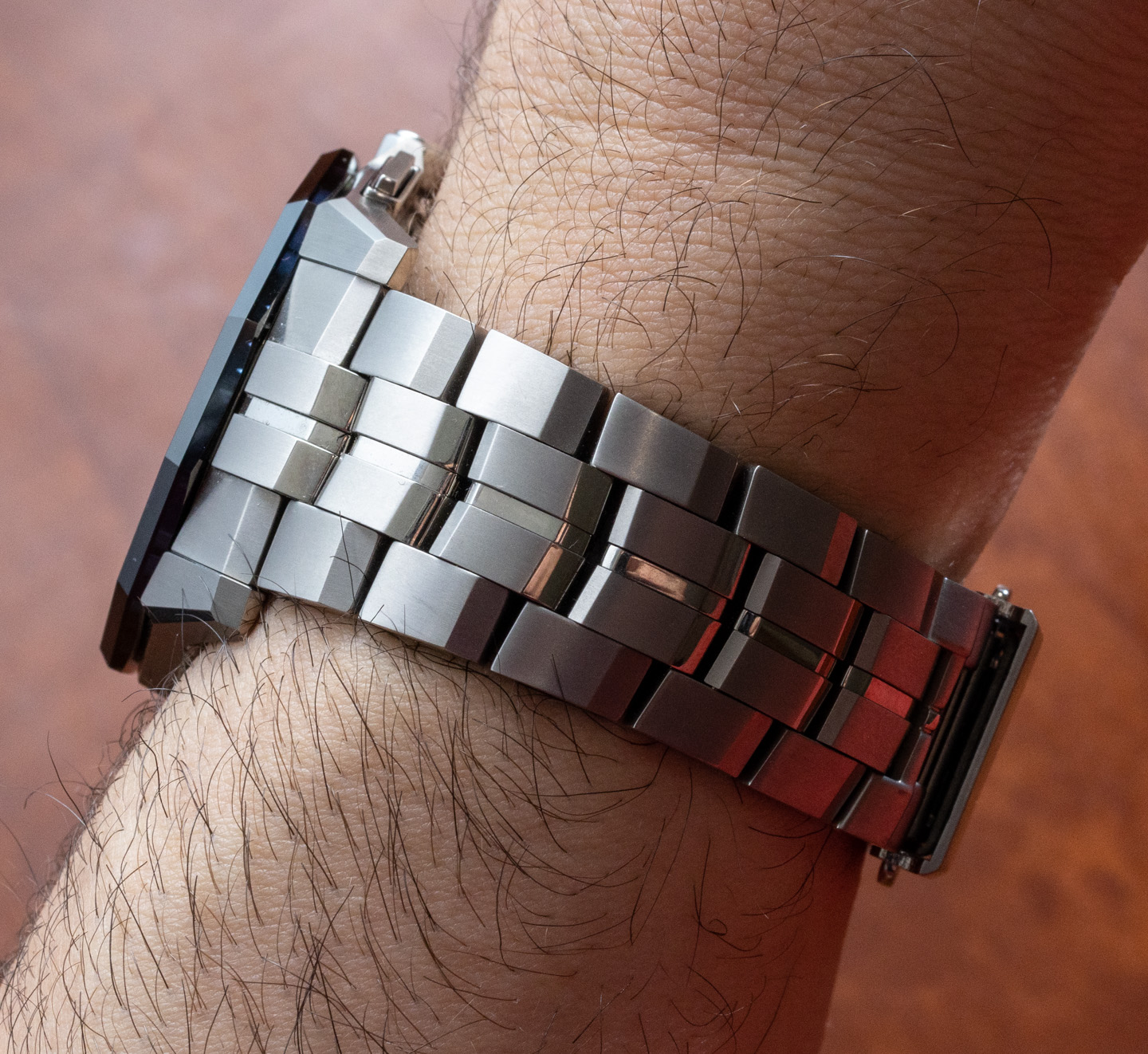
The Oceanus OCWS6000 case is four grams heavier than the OCWS5000 (probably due to the bezel material) but a bit thinner and more compact on the wrist, even though it actually appears to wear a bit larger. This is all thanks to some very clever design and engineering choices in the case, which, for the OCWS6000 is just 8.7mm-thick (versus 9.5mm-thick for the OCWS5000) and 42.5mm-wide (versus 42.3mm for the older model) and 47.1mm-long (versus a lug-to-lug distance of 48.8mm for the previous-generation model). This translates into a very different and, in my opinion, improved wearing experience on the wrist, given how thin the case feels and how the proportions are masculine though still modest in dimensions. With durability in mind, the case is water resistant to 100 meters.
One major redesign for the Manta case is the move from an integrated bracelet system to a more traditional set of lugs that allow the wearer to remove the bracelet and fit the case with a standard 20mm-wide strap. The titanium bracelet tapers down to 18mm and, aside from the new end links, is the same bracelet from the OCWS5000 (from what I can tell). The bracelet is a fun take on mixing classicism with some futuristic elements. It is lightweight and made from scratch-resistant coated titanium, and it has an attractive and compact push-button fold-over deployant clasp. Similar to many Rolex watch bracelets (though executed differently), the bracelet has a “comfort extension” that opens or closes the bracelet size by about two or three millimeters.
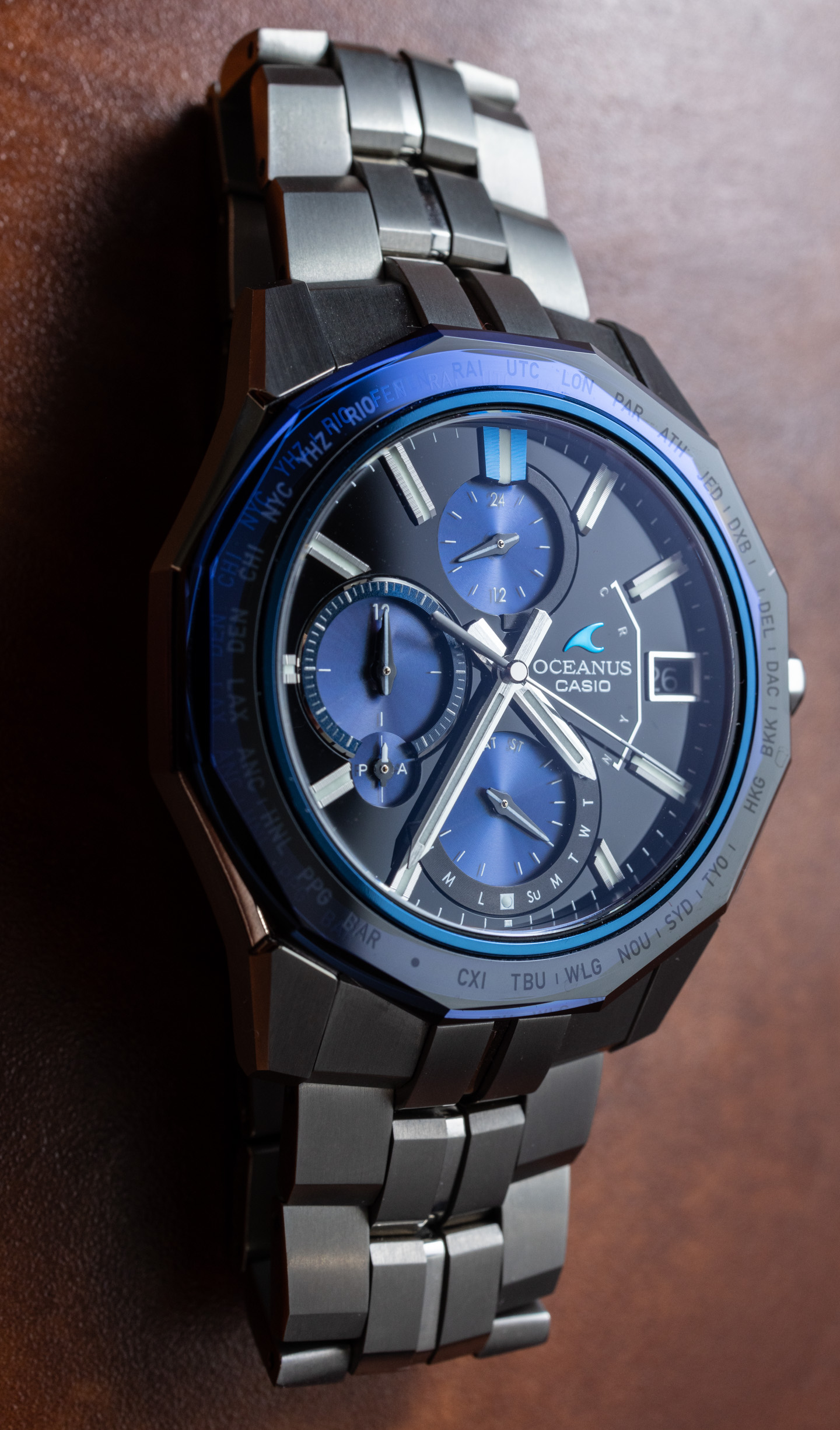
From a design perspective, it is hard to fully categorize the Oceanus Manta — I call it a “futuristic dress watch.” Such products have a lot more logic to them in places like Japan where a highly mobile business culture has a demand for durable, highly precise, highly reliable, and fashionable timepieces. This is also in sharp contrast to Casio’s popular G-Shock collection, which, outside of a few specialty models, is decidedly not a dress watch in form. Simply put, the Oceanus collection has always been about Casio trying to place some of its best technology in a thinner and more compact form with a product that feels more traditional and classic, versus a typical G-Shock watch that is meant to be mostly youthful and sporty. In other words, the Oceanus is a more “serious” product, while your typical G-Shock might be considered a more “fun” product.
Visually, the most interesting part of the Oceanus Manta OCWS6000-1A, when compared to previous models, is the bezel. Casio uses a trendy-looking geometric bezel that is 12-sided and produced from a piece of cut sapphire crystal. Another sapphire crystal is, of course, used over the dial. The sapphire crystal bezel has a series of processes applied to it to give it a very interesting and beautiful blue hue. Gaze carefully into the bezel and you’ll see a list of reference city names, which is an important part of how you manually adjust your current time zone. I’ve always felt that this city name scale was too prominent given how infrequently most wearers use it, so I applaud Casio for including the scale but in a less obvious and overt manner, which I think aesthetically benefits the overall composition of the watch. Casio seems to apply the text and blue color treatment under the bezel material so it has a blue color but also appears transparent. I happen to think that the bezel is beautiful and — even if it is a trendy look — this particular implementation is very original, and I’ve never seen anyone but Casio do it this well.
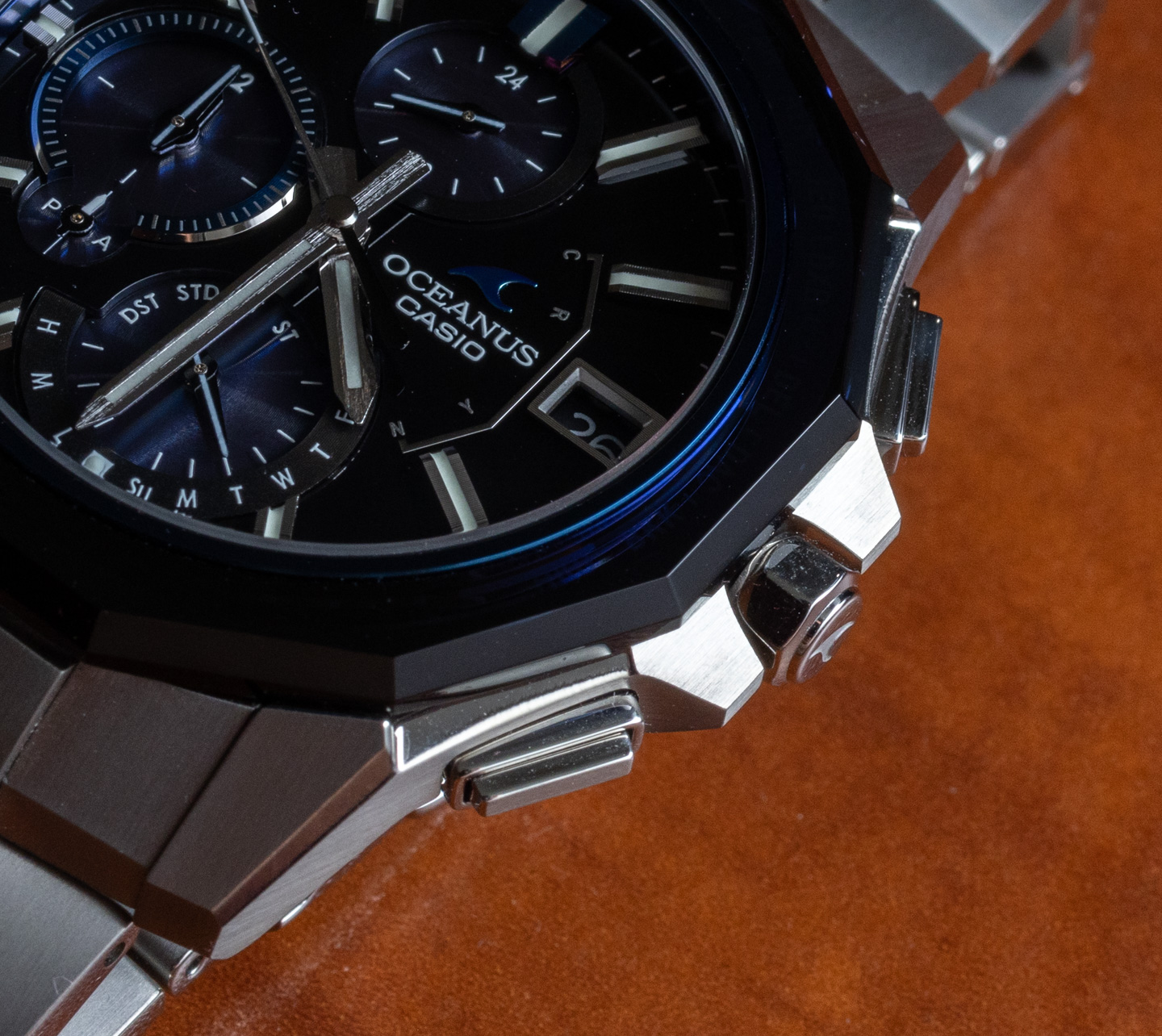
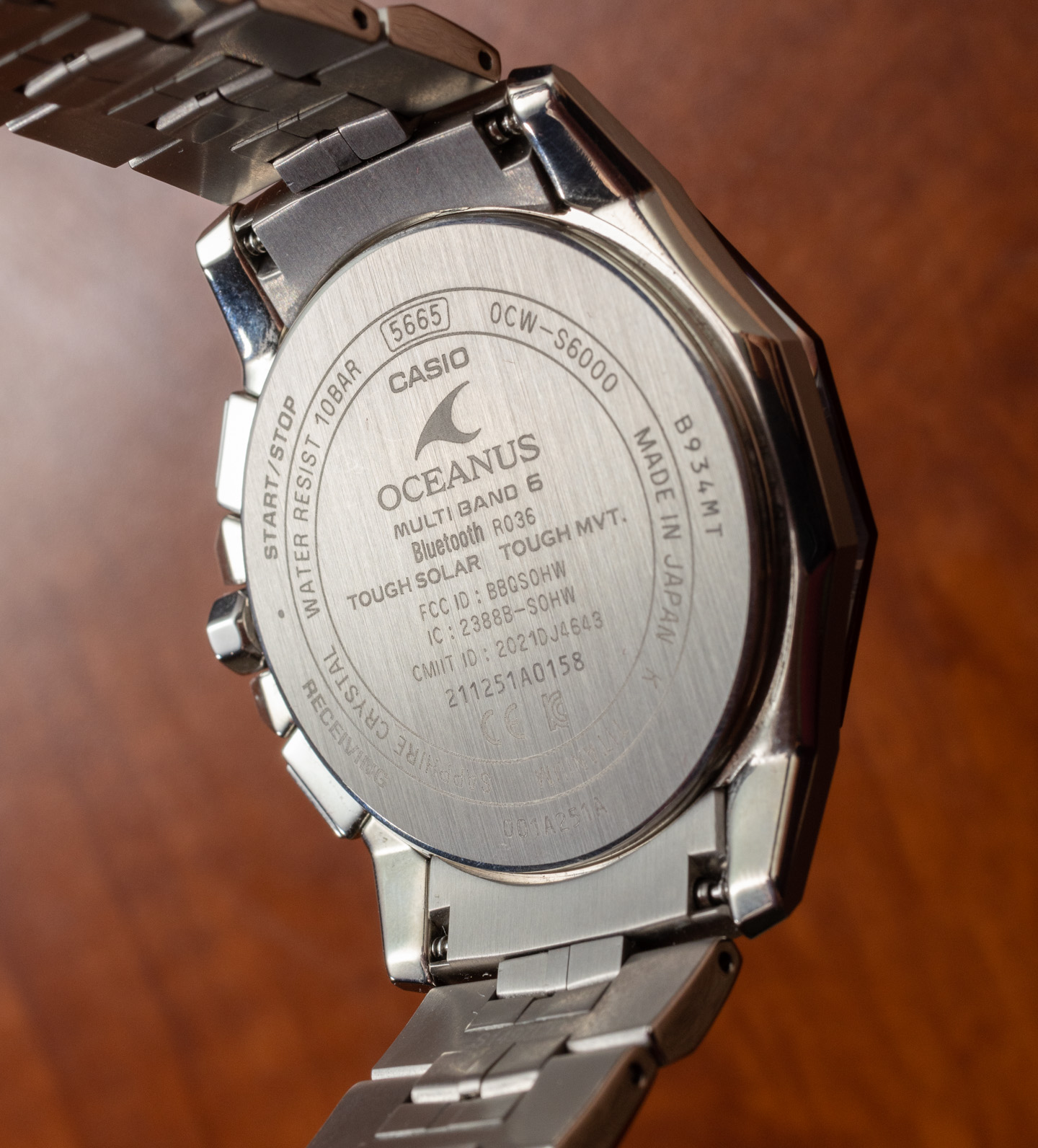
That makes sense because Casio’s designers and engineers really have fun with products at this higher price point. Produced in relatively small batches at Casio’s esteemed Yamagata Factory in Japan, Oceanus products tend to get extra attention, as well as serve as an experimental platform for Casio to play with new designs, materials, and manufacturing techniques. This is why many new high-end G-Shock and Oceanus watches typically have an art or design story, as well as the occasional technical story such as a new movement or piece of functionality.
I’m normally a bit intimidated by these high-function, all-analog movements from Casio because, from a legacy perspective, a lot of study is required to understand how to use them. Alas, this is more or less a problem of the past because watches like the Oceanus Manta have a Bluetooth-enabled movement that connects to an app on your smartphone. I had some issues finding out which Casio app to download (this new OCWS6000 needs to use the Casio app, as opposed to the Casio Oceanus app which I believe is going to be eventually phased out in favor of a more unified Casio smartphone application experience), but once the timepiece is connected, you have a lot of options when it comes to operating it from your phone.
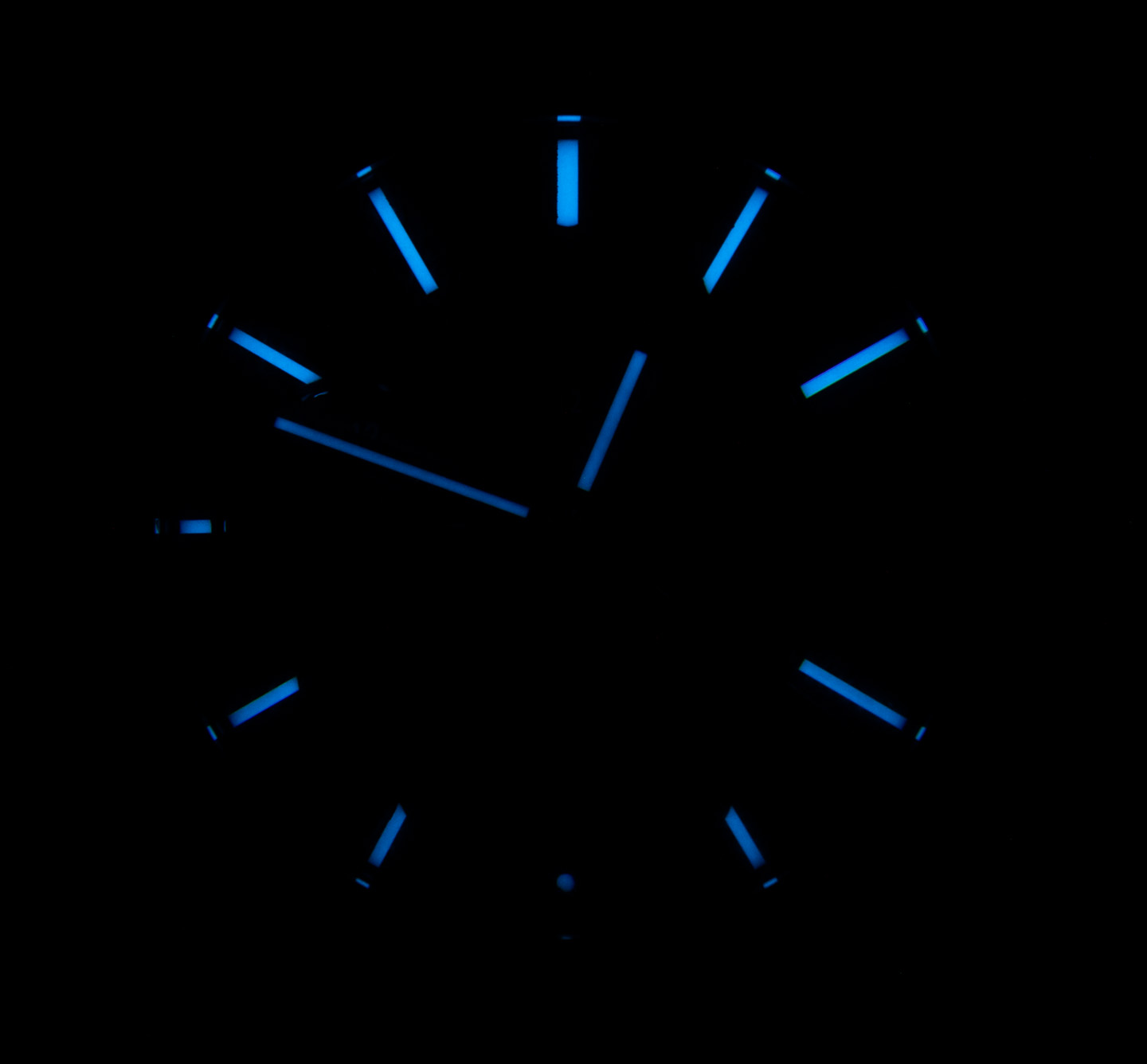
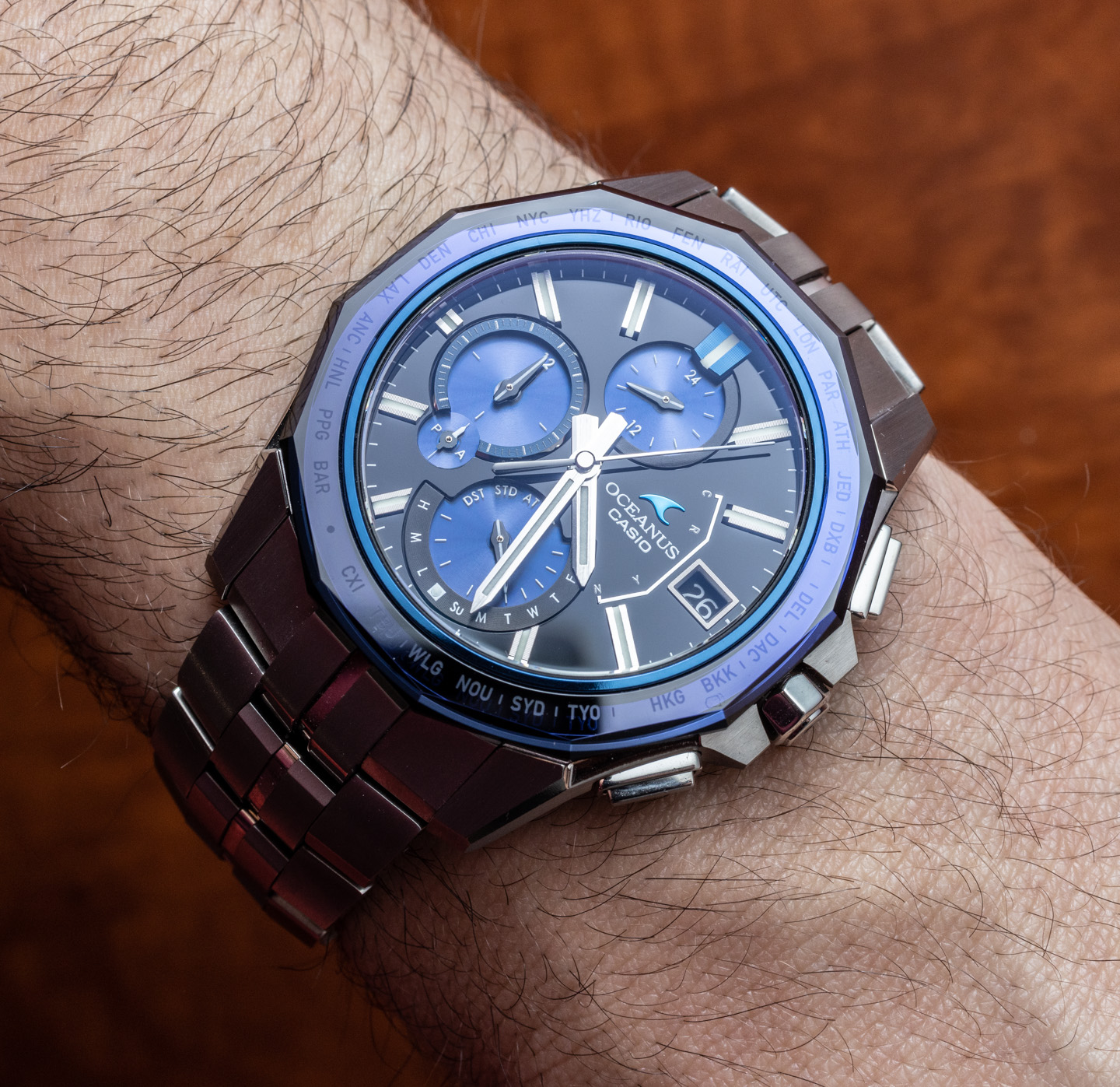
Again, the Casio Oceanus Manta OCWS6000 is not a smartwatch, per se, but it is a watch that allows you to set the time via your phone (automatically once you set it up properly) and adjust various features on the watch, such as setting the alarm and operating the dual-time functionality. Learning how to do all of this via the two case pushers and the crown is a bit complicated, so the ability to adjust and operate the watch via phone is now a feature I would not want to be without. When you fully use the features of the watch, you get two time zones on the dial, an AM/PM indicator for the local and home time and a date-day calendar. When you press the upper of the two case pushers, the dial immediately goes into chronograph mode, and some of the hands temporarily change what they are doing to display stopwatch information. Casio makes clever use out of space on the dial and the available hands to perform more functions than you might expect. That said, the Oceanus Manta OCWS6000 already has eight hands, not including the date window disc.
For those people living near atomic clock radio signals, the movement will pick up those in the event that it doesn’t have your phone to use for updating the time. And the movement is also “Tough Solar,” which means it is charged by the light (with between 5-18 months of power on a full charge, depending on usage) and has the “Tough” features people are familiar with on analog G-Shock watches, including hands that realign back into their proper position if they have been knocked out of place due to shock or similar disturbances.
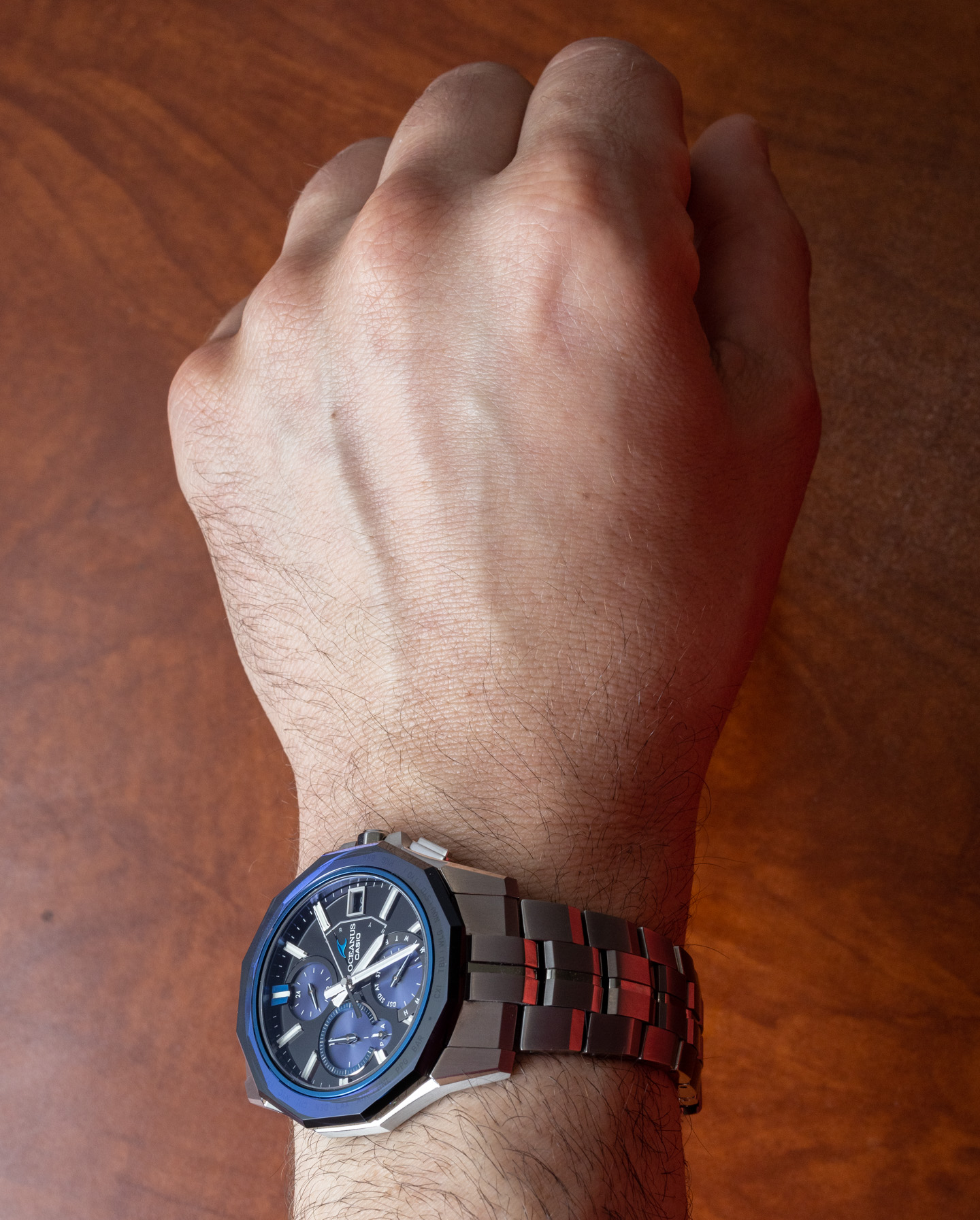
There are a lot of ways that I think Casio might imagine next-generation watches like this that play with data that is accessible via a phone connection. Right now, Casio designs its movements to be able to operate autonomously but to have extra functionality if you have a Bluetooth phone connection. That is wise, but it also prevents some interesting watch display experimentation.
Let me give you an example of something I have in mind: Casio could develop a dial that indicates the current temperature or weather prediction. This data would have to be pulled from a phone’s Internet connection, but having it displayed attractively on your wrist is something consumers would like. Traditional watches excel when they deliver information in a useful manner, even if that data is available elsewhere. What is important is bringing that information front and center to the viewer’s attention. Accordingly, Casio could develop multi-purpose analog displays that could extend the functionality of the watch beyond on-board sensors and include data that would only be available from your phone. I know Casio and others are starting to experiment with features like this, and I think it is an important conversation to have as the connection between phones and watches has never been more culturally relevant than it is today.
While there are a lot of cultural and functionality similarities between a Casio Oceanus and G-Shock product, these are two very different watch-wearing experiences. The Oceanus Manta is a product with very little competition, most of which probably comes from Japan’s Citizen (even though there is no direct competition). That means it will take watch consumers a few years to both understand these products and determine how to best fit them into their lives. What I like most about the Oceanus Manta OCWS6000-1A is that it is reliable and functional like a G-Shock but entirely different on the wrist. This isn’t just about it being smaller and more dressy in appearance, but also in terms of how the world perceives it given the more formal and jewelry-style vibe and personality. The OCWS6000 is easily the most comfortable and cool Oceanus watch I’ve ever worn, and I also find myself increasingly being drawn to the design and personality.
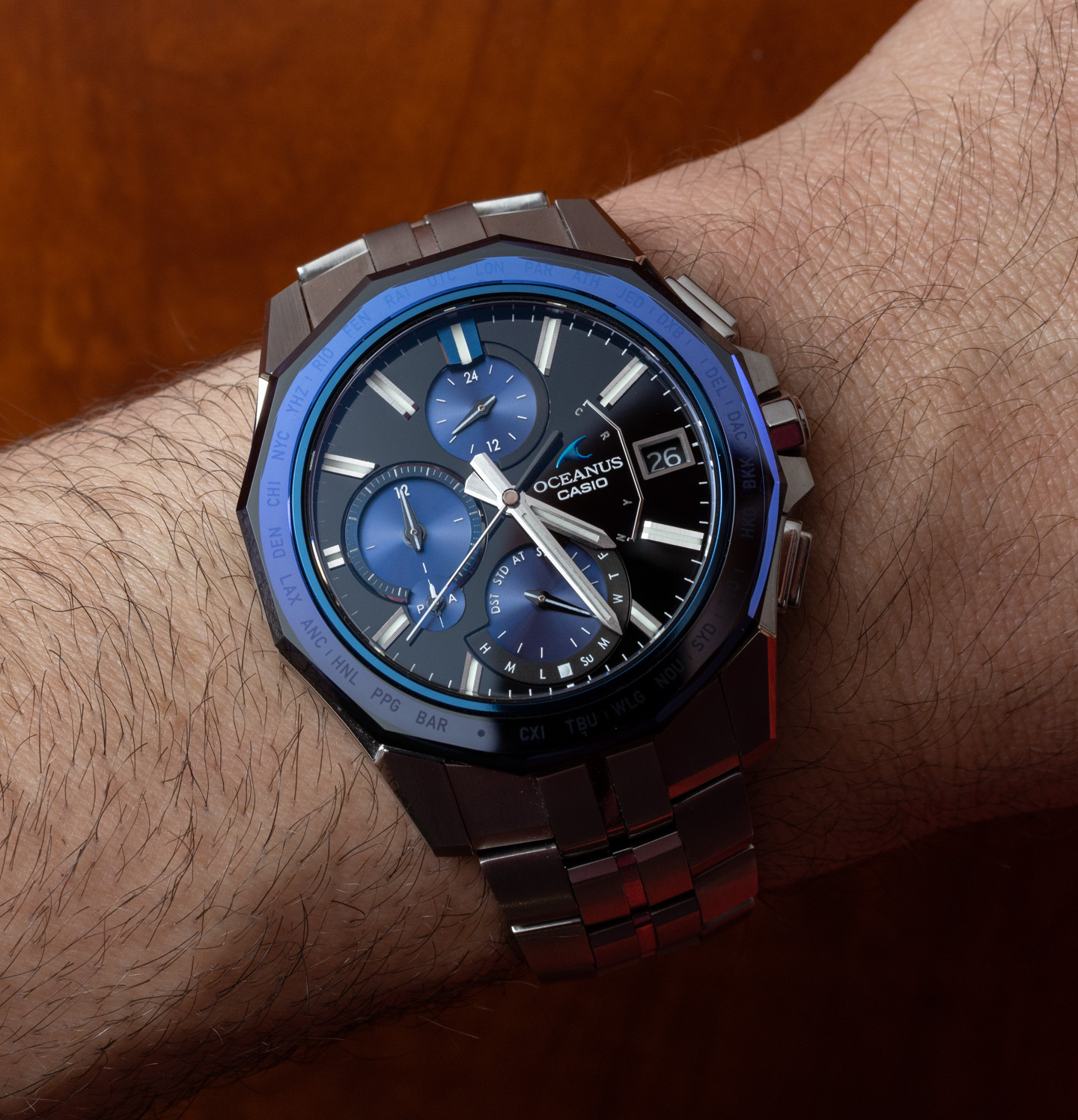
Now that Oceanus is a world product, Casio will likely continue to evolve the collection and further refine it for global tastes and expectations. For now, the OCWS6000 is a specialty model from a major brand and a great experience for people who can see a space for it in their lives. The watch is beautiful without being boring, functional without being finicky, and surprisingly rich with personality and details. Price for the Casio Oceanus Manta OCWS6000-1A watch is $2,400 USD. Learn more at the Casio watches website here.

